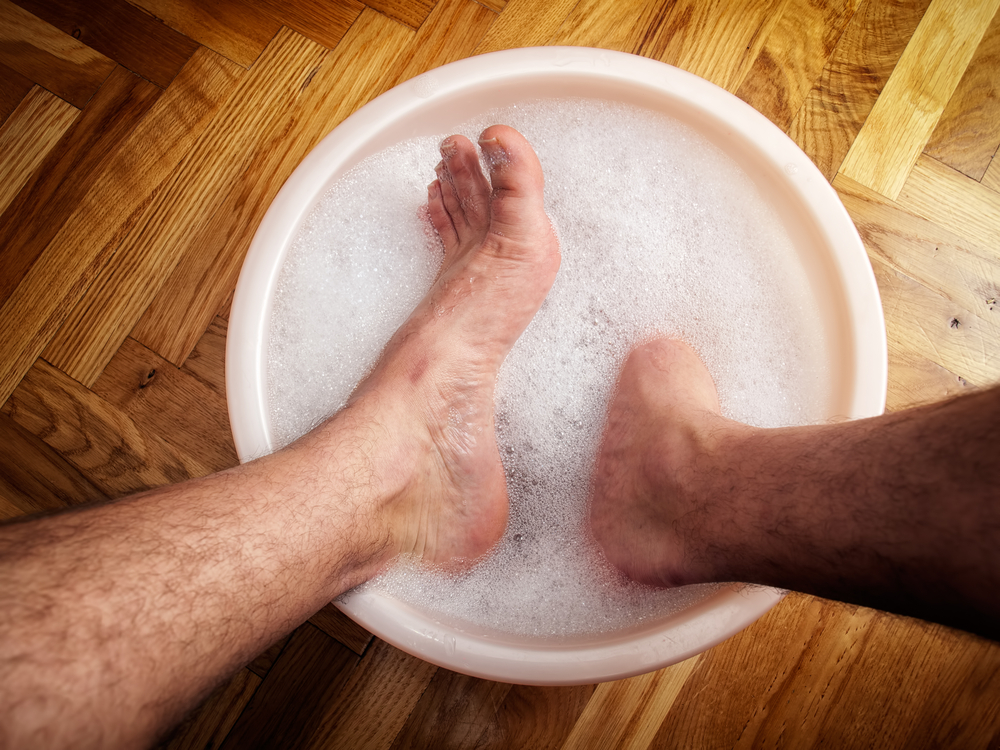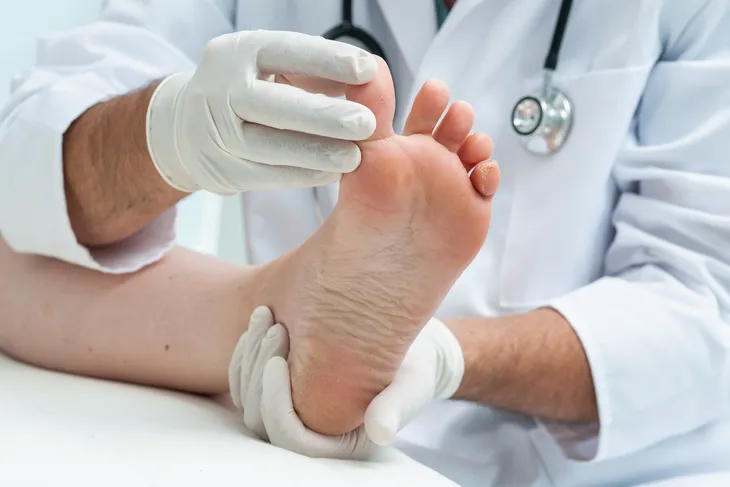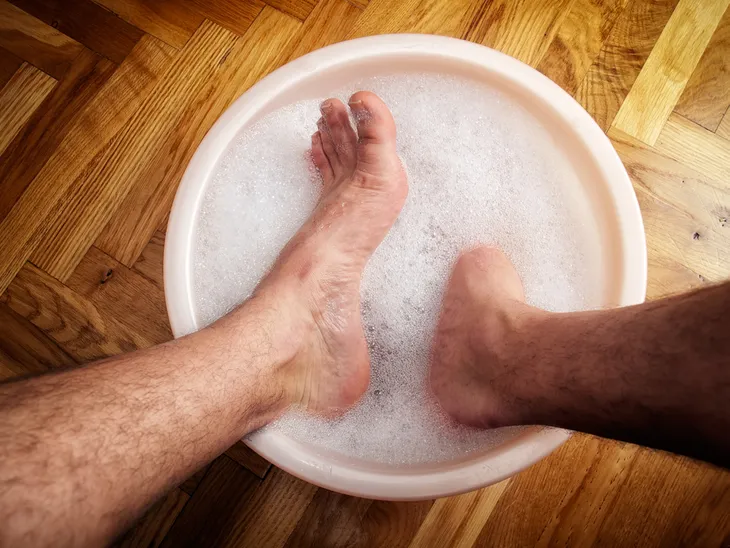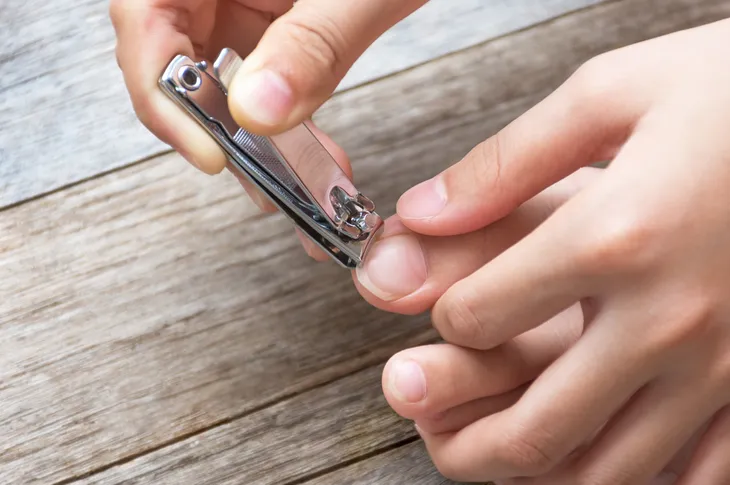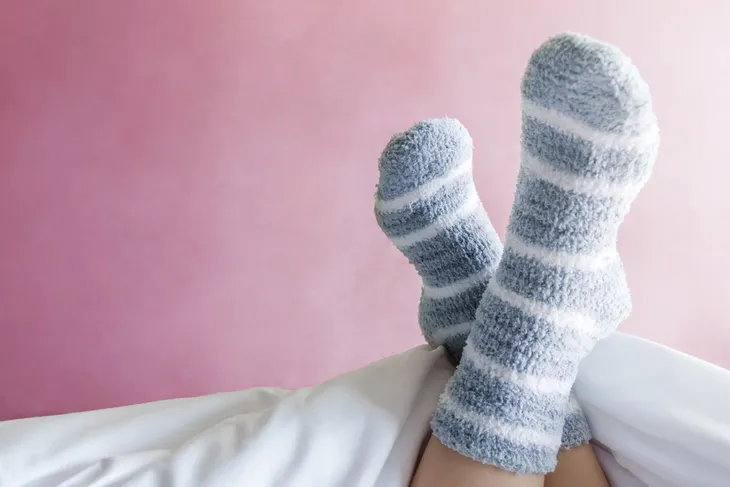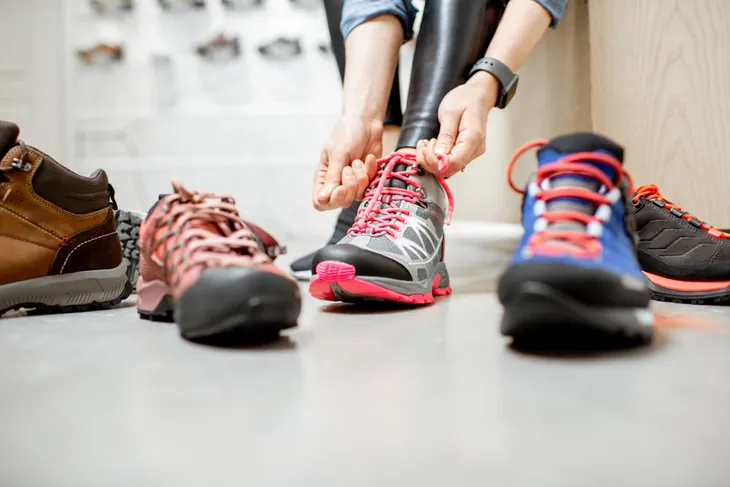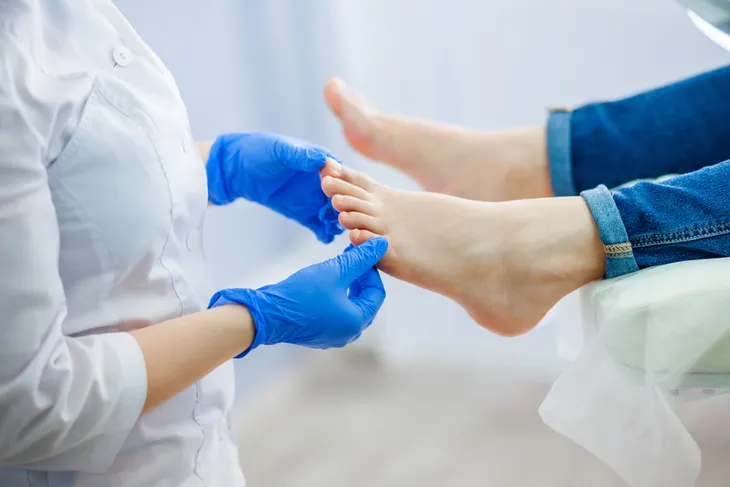Foot fungus can be a taboo thing to talk about but it really shouldn’t be. Cleveland Clinic says it’s estimated that around one in 10 people experience foot fungus. For people over the age of 70, that statistic actually jumps to 50-percent of people. It’s officially known in the medical world as tinea pedis and onychomycosis, and luckily, it can be prevented. It’s important to prevent foot fungus from spreading further and begin treatment as soon as you can. A big part of treatment is making some decisions in your day-to-day life that make it harder for fungus to thrive.
How Do You Know It’s Foot Fungus?
Of all the conditions that can happen to your feet, developing fungus is one of the most common. It generally starts between the toes and can spread to the toenails and the rest of the feet. Some people may develop it on multiple toenails or even the skin between their toes. The fungus can grow due to a crack or cut in the toe.
Fungus makes your toenails look different. Cleveland Clinic says it can change colour and appear white, yellow, or brown. The toes may thicken or look cloudy in some spots, as well as crack or break. The toenail may also separate from the nail bed and leave space between the nail and skin underneath. Now that we know the telling signs of foot fungus, let’s take a look at how you can stop it.
Wash Your Feet Well
If you’re not already washing your feet thoroughly each time you shower, then make sure to start. Foot fungus can be prevented and effectively treated with proper hygiene. This means regularly washing the skin on top, under, and between the toes on a regular basis.
An article published on SELF says there is a ton of bacteria on our feet that can build up without proper washing. Scrubbing your feet also helps exfoliate away dead skin cells and prevent skin cells from building up.
Keep Your Feet Dry
As important as it is to keep your feet clean, it’s equally vital that you properly dry them afterward. Moisture does not cause foot fungus but the fungus does thrive in moist environments.
Grab a towel and thoroughly dry every crevice of the foot. WebMD says having well cleaned and dry feet make it more difficult for fungus to develop.
Never Go Barefoot
Foot fungus is a contagious condition that can be passed around. You can spread it from person to person through direct contact or by coming into contact with an infected surface. The New York Times reports that fungal infections thrive in warm damp environments, putting you at risk of developing foot fungus in public places.
Wearing sandals or flip-flops can protect your feet from fungi in public spaces. Just remember that it’s also important to wash out your protective shoes either with a wet towel or pouring water to remove residual fungi.
Important Places to Wear Shoes
If you’re wondering which places you should wear shoes, we’ve made a simple list for you! Make sure to wear shoes instead of going barefoot at breeding grounds such as:
- Public showers
- Locker rooms
- Swimming pools
- Splash pads
Cut Your Toenails
Another habit to bring into your hygiene routine is clipping your toenails. If your nails grow too long, it can lead to several issues like cut skin, ingrown toenails, or the spread of fungus.
Healthline says to use toenail clippers and cut straight across the nail. You may need specialized clippers if your toes have begun to thicken or separate from the skin. Make sure to cut slowly and with extra care if you’re currently dealing with foot fungus.
That being said, do not share nail clippers with anyone else. Foot fungus is contagious and can be spread if the clippers are not properly sanitized.
Change Your Socks Often
Another area where moisture and fungi can grow is your socks. Socks can absorb sweat or other liquids throughout the day. If they are not changed on a regular basis, then your feet could be sitting in a cesspool allowing fungi to thrive.
Prevent this from happening by wearing a fresh pair of socks each day. If they get wet for whatever reason, don’t think twice about changing into new ones. Be sure to change socks after doing a workout or other strenuous activities.
Invest in Proper Footwear
The type of shoes you wear on a daily basis have a great impact on your foot health. For instance, there are shoes that make you more vulnerable to foot fungus. WebMD says that tight and hot shoes make it difficult for feet to breathe. This type of environment is ideal for fungus.
Next time you’re shopping for shoes, choose a pair that is not too snug. Opt for high-quality materials such as leather and pair your shoes with moisture-wicking socks made of synthetic fibers.
Over-the-Counter Cream
Those dealing with a minor case of foot fungus may find an over-the-counter cream helpful. These creams are readily available at most drugstores. It can help you get rid of fungus and prevent your condition from getting any worse.
Mayo Clinic says these medications come in the form of nail creams and ointments. They recommend filing off any white markings on the surface of the nail. Then, soak the toenails in water and properly dry off. You can then follow up by applying the medicated cream or lotion.
Avoid Nail Polish
Getting a pedicure can be a real confidence booster. But what’s not so great is if the heavy nail polish you’re wearing puts you at risk of foot fungus. Everyday Health says that polish blocks light and creates an environment more conducive to fungal growth.
To prevent this from happening, give your toenails a break from polish once in a while. Never apply nail polish if you suspect food fungus is developing either. And whenever you use nail tools or visit a salon, ensure that everything has been properly sanitized.
Risk Factors
We know that putting your feet in moist and warm conditions can potentially lead to foot fungus. Other factors that come into play include excessive sweat, tight shoes, and unwashed feet. While these factors are mostly based on choices we make on a daily basis, some people may carry risk factors that are not within their control.
Some risk factors for foot fungus include:
- Older age
- Prolonged water exposure
- Previous injury to the nail
- Inflammatory diseases of the nail
- Excessive sweating
- A suppressed immune system
- Underlying conditions such as diabetes or psoriasis
- Obesity
Talk to a Podiatrist About Your Condition
If you’re dealing with foot fungus that won’t go away, book a visit with a podiatrist. They can look into your issue and recommend a treatment. You don’t want to wait too long to see the doctor since foot fungus can potentially spread to other parts of the body.
There are several treatment options for foot fungus depending on the severity of your case. This includes:
- Oral antifungal medication
- Topical medication
- Laser treatments
- Surgery
The sooner you see a doctor, the sooner your feet will be back to normal. Start implementing anti-fungal habits into your routine such as clipping toenails, thoroughly washing, and wearing flip flops in public places.
